PARAGUAY – Recovery stage at Salitre Cue farm (March 2021).
Situation/weather: We are back to a more normal situation in terms of weather. Last week of March, we registered some rains which allow us to begin again pumping water from the river (restrictions set up by authorities have been lifted) in order to fulfill our artificial lake used as water reserve.
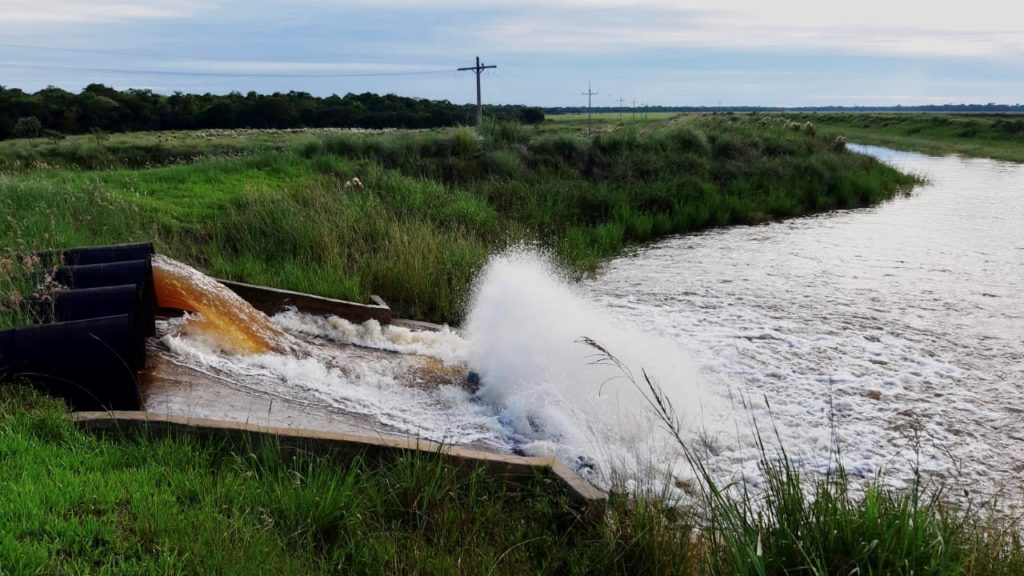
Due to the intense drought period we faced earlier this cycle, we were forced to use all our water reserve to irrigate the rice fields. However, it was still not enough as we report it previously.
Drought situations in Latam (26/10/20)
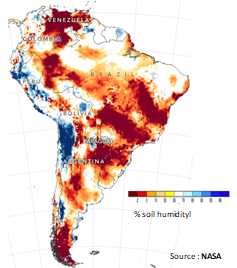
Harvest: Harvest and drying process have been completed. Among the 965 ha which could be sowed (vs 1528 ha budgeted), we could only harvest first stage of sowing on 538 ha. We could temporarily irrigate our first block of sowing thanks to our artificial lake but not the 2nd stage which we had to abandon (see previous posts).
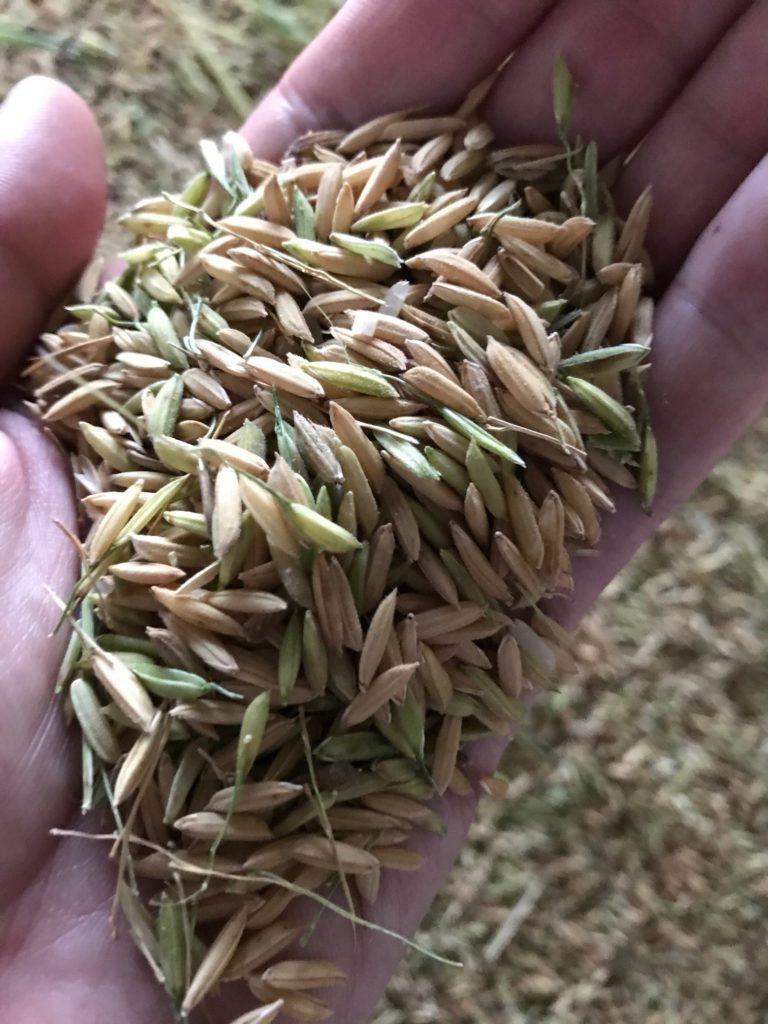
We have produced 2,763 tons with a yield of 5.1 t/ha and an average quality index of 42%. We have sold almost all rice stored in our silos, and we could sold it at a peak price of USD 250/t. However, we are far from our objectives this year; it was a very challenging and disappointing campaign for us so as all the rice producers.

Diversification: For diversification purpose, we agreed with our partner to add soybean cultivation to our mix. We are planning to develop with our partner 1,100 ha of soybean at the farm over the next 3 years.
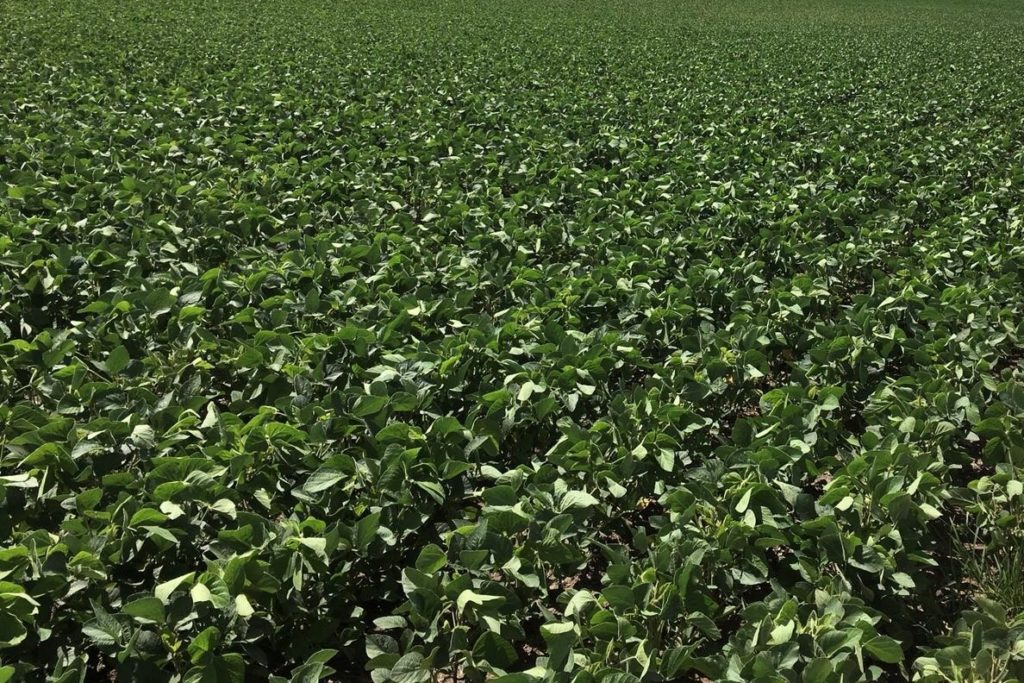
The farm will then have a modular double production: 1,600 ha dedicated to rice cultivation and 1,100 ha dedicated to soybean cultivation. Soybean and rice have not the same momentum of production and soybean production does not require irrigation like rice. Furthermore, this crop has great outlook. China imports the most soy and is expected to significantly increase its import of the commodity. Soy is pervasive in our lives. Not only are soybeans made into food products like tofu, soy sauce, and meat substitutes, but we also eat them in the form of soybean oil and soybean meal. Soybean meal is widely used as animal feed, so we humans consume much of it indirectly via our meat and dairy.
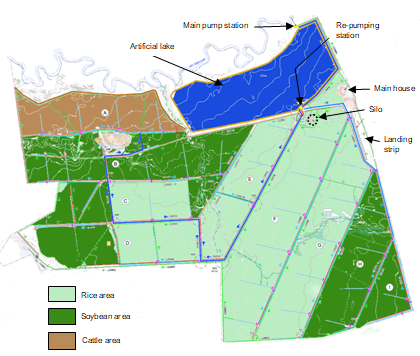
You can see on the farm map our productive area of which 2,840 ha are dedicated to crops production (adjustable) and 270 ha may be allocated in a near future to a cattle breeding activity. We are going to start land preparation of soybean and rice in early April.
ARGENTINA – Update on San Bartolo farm activities (March 2021).
River cleaning: Maintenance and adjustments work performed in the river El Dorado are now fully completed, and have been certified by local authorities. End of February, we registered some dense rains for the season (80 mm) raising significantly the level of the river as you can see.

The good news is that no water entered into our far; meaning that the river flow normally and that all the work performed in the river seems to pay off. We can now again focus our efforts on our cattle operation.
Cattle operation and pastures: We have avove 3,200 heads at the farm. Dryness has affected the whole region for the last 8 months and has affected the shape of our herd at various levels (well-being, production, diet, fertility, etc) as well as pastures available. The situation displaced standing water and some flooded area in the farm caused by illegal protection walls build by some farmers’ upper the river which changed water course.

We are in a recovery stage: Grassing areas have reduced given the lack of water and the flood situation we faced earlier did allow us to sow pasture on cleaned fields; only wild vegetation has grow as you can see. In any case, the farm needs permanent control of the natural vegetation which is typical for the region of Salta (a formerly forest area with a subtropical highland climate). The cattle need also to recover so that productivity can back on track. However, we do not believe we can achieve our annual beef production objective of 276 tons.
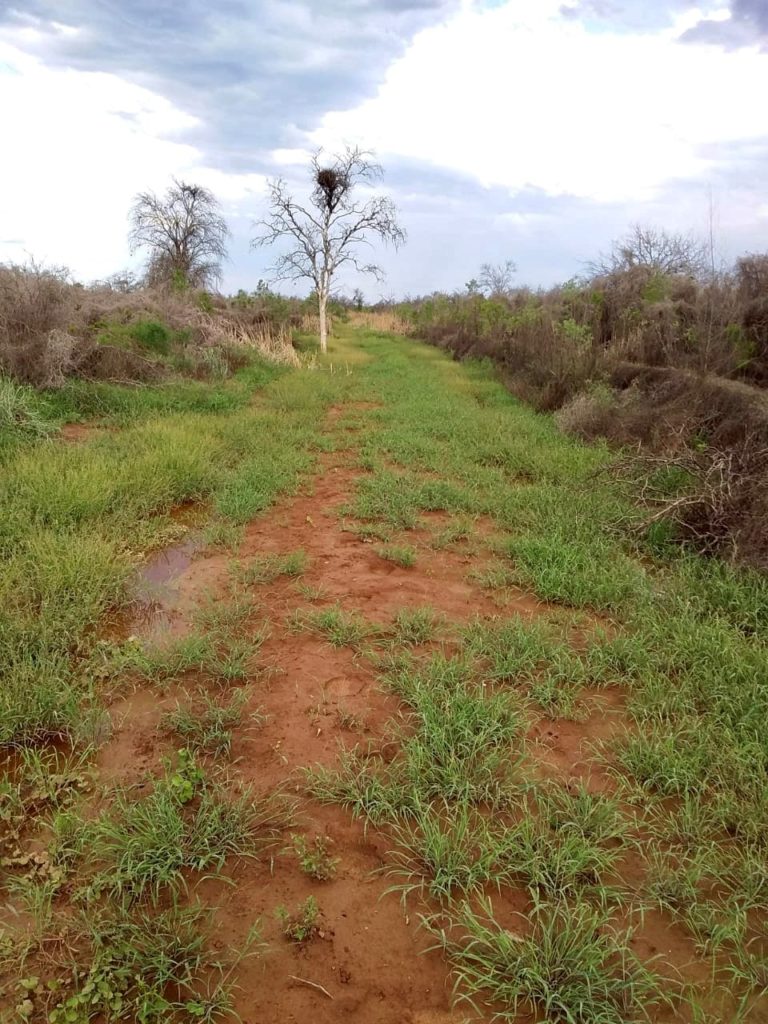
We will start again to clean and control trees so as to enhance our grassing area. Meanwhile, the most sensitive categories will for now continue to be supplemented with corn and pellets as pastures are not dense enough to address their needs especially in terms of protein.
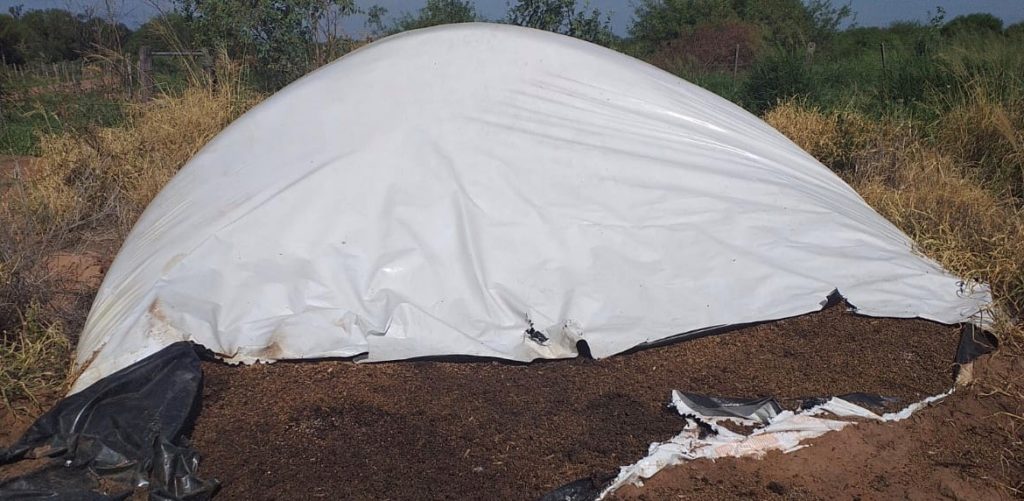
This year, we have also 1,460 heads (cows & heifers) in service (ppregnancy ratio will be determined after performing the test in April), and animals feeds have an effect on reproduction at each stage of reproduction in females (puberty, cyclicity and oestrus, service or insemination, gestation, end of lactation, post-partum, lactation) and in males (puberty, libido, sperm and semen analysis). So there is an effect on the numerical productivity of the herd. There are two feeding periods particularly critical for the reproduction of the cow: before calving (steaming) and above all around fertilisation (flushing). Therefore, it is key for us currently to provide them appropriate food and supplementation because the unborn calves are our future.
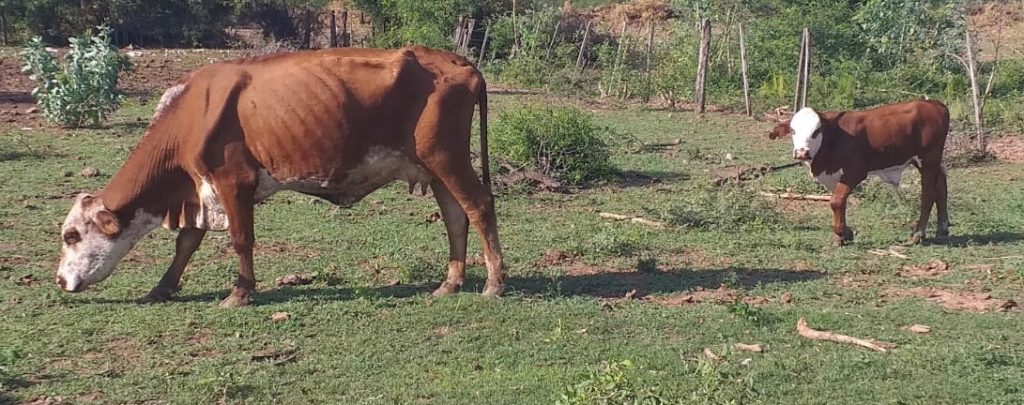
ARGENTINA – Update on Curupi Pora farm activities (February 2021).
Situation/weather: Even if we are in the peak of the summer, we are back to more decent conditions as we registered dense rainfalls which have immediately boosted pastures and and recharged the water reserves. Dryness faced earlier this cycle has heavily affected all farming activities in the entire the southern cone of South America (north-central and northern of Argentina, Uruguay, South of Brazil and Paraguay).

You can see our big natural lagoon with plenty of water where our cattle can again go refresh themselves. Our Australian tanks have also been fulfilled by rains. Here, you can see our latest one with a 400,000 liters capacity, powered by a solar pump which is delivering 30,000 liters of water in 8 hours.

Cattle operation: We have currently above 5,750 heads at the farm. They maintain well during the heat stress thanks to a close monitoring from the manager and his team.

Grassing areas are recovering, allowing lower food supply. The drought will however leave marks and we doubt that we can reach our annual beef production plan of 546 tons.
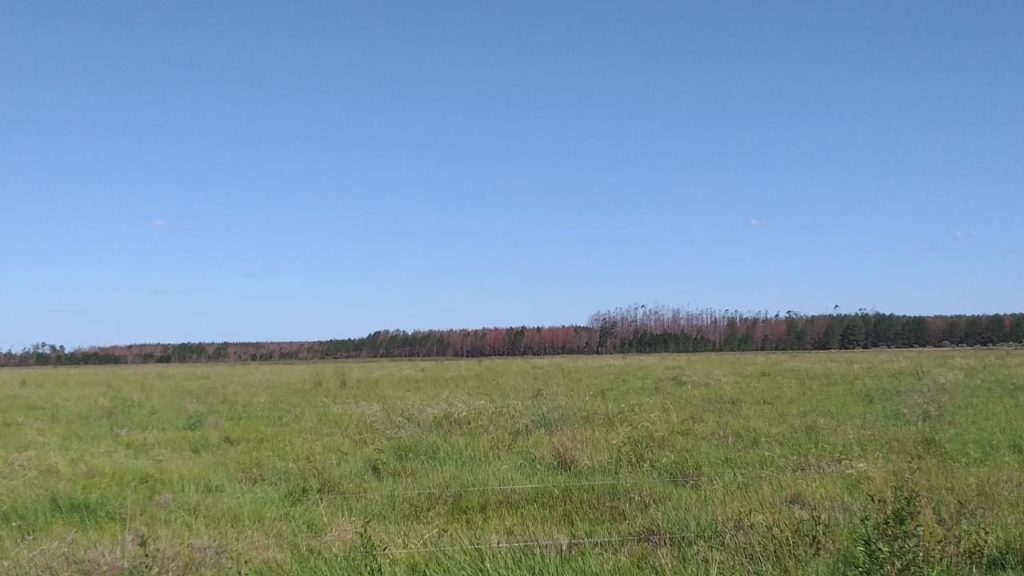
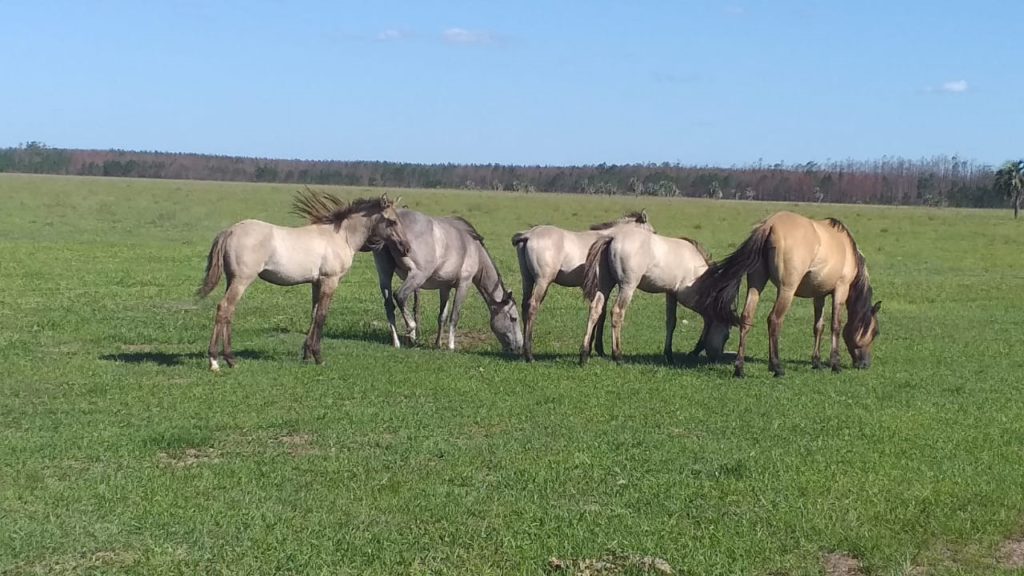
However, our herd is in good shape. You can see on the following pictures calves and cows – some of them are actually in service.
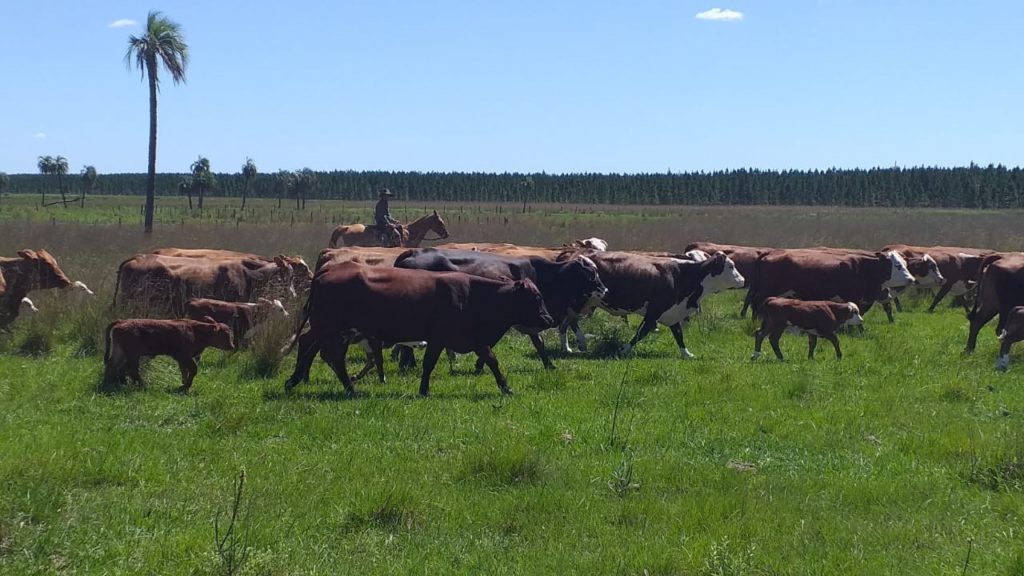
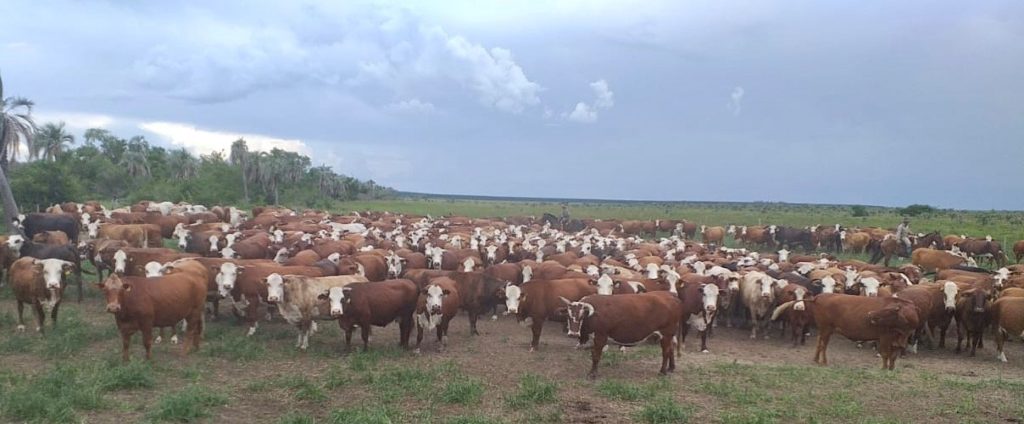
You will also see some very early weaning calves. Due to the drought situation, we performed it while the animals had only on average 60kg versus 100kg normally.
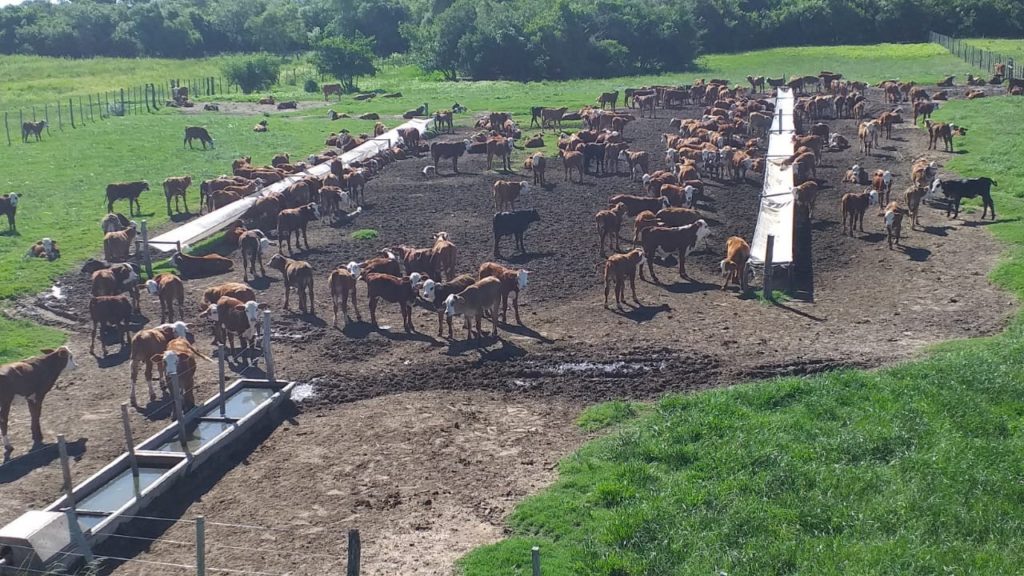
The good news is that all categories of cattle prices are at their historical highest. For example, you can see below the 10-years Argentina’s average live cattle price chart of steer (16 to 36 Months – in ARS denominated)
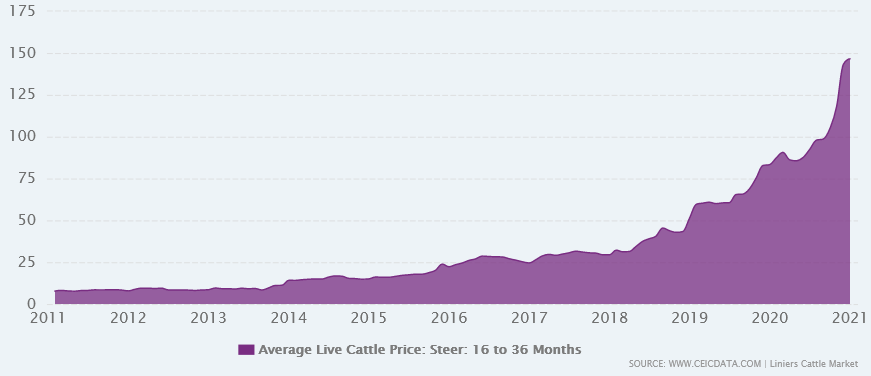
Sales abroad of Argentina’s famed red meat are at a record, fuelled by China, while domestic consumption is slumping. However, President Alberto Fernández is threatening farmers with a tax hike or quota for exports as he seeks relief for families grappling with inflation that’s forecast to reach 47% percent this year. Surging global prices for crops and a steady depreciation of the peso mean farmers are receiving good export prices, but Mr Fernández said he won’t tolerate the same dynamic locally. Several weeks ago, he banned for example shipments of corn, used as feed by livestock producers, but he backtracked later because of farmer backlash.
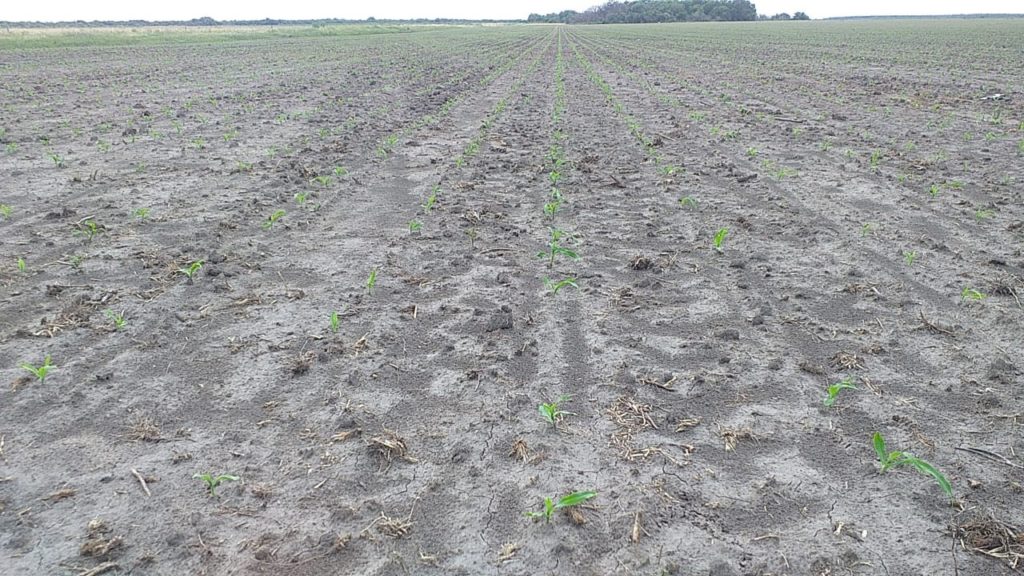
Finally, we have subleased this year 200 ha to a contractor to plant corn. Sowing took place in early January and the crop is developing well. We will be paid in kind (kg of corn) and this corn will then be used to supplement the cattle.
PARAGUAY – Drought stress consequences at Salitre Cue farm (January 2021).
Situation/weather: The rains, which were so sorely lacking during the sowing and the development period of our rice, are back as you can see. The river went up to a more normal situation and we are taking advantage to refill smoothly our reservoir which reached it lowest level due to the intense drought the entire region faced earlier this cycle.
Production: The harvest of our 1st block (538 has) is almost completed, and production is know processed to be dried and stored in our silos. As for our 2nd block (438 has), our engineers consider that the plants have not developed enough to worth any harvest.
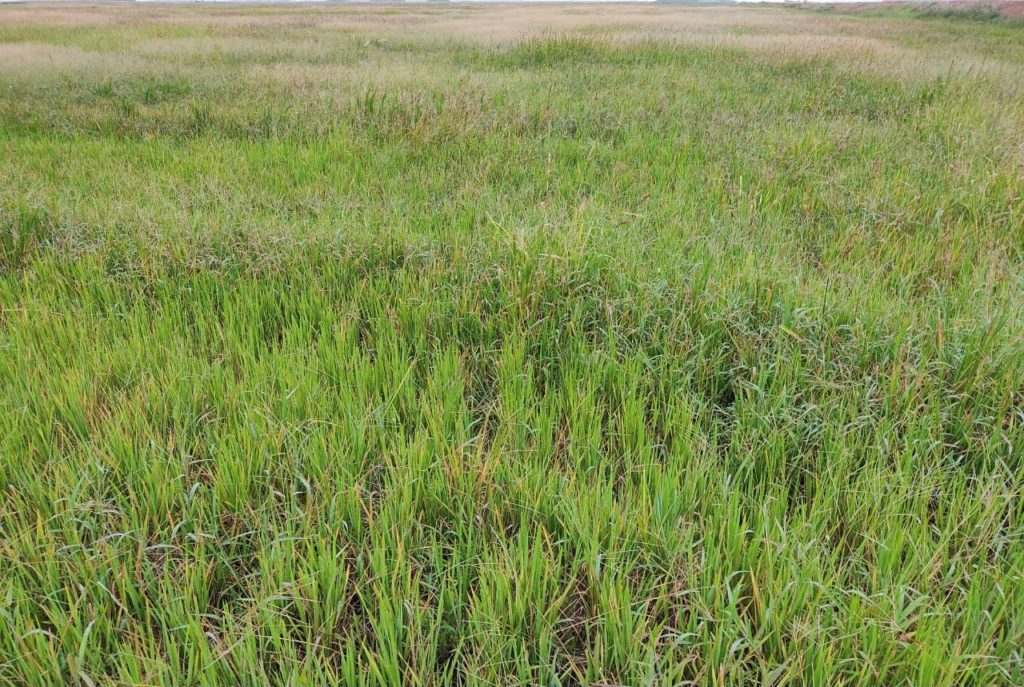
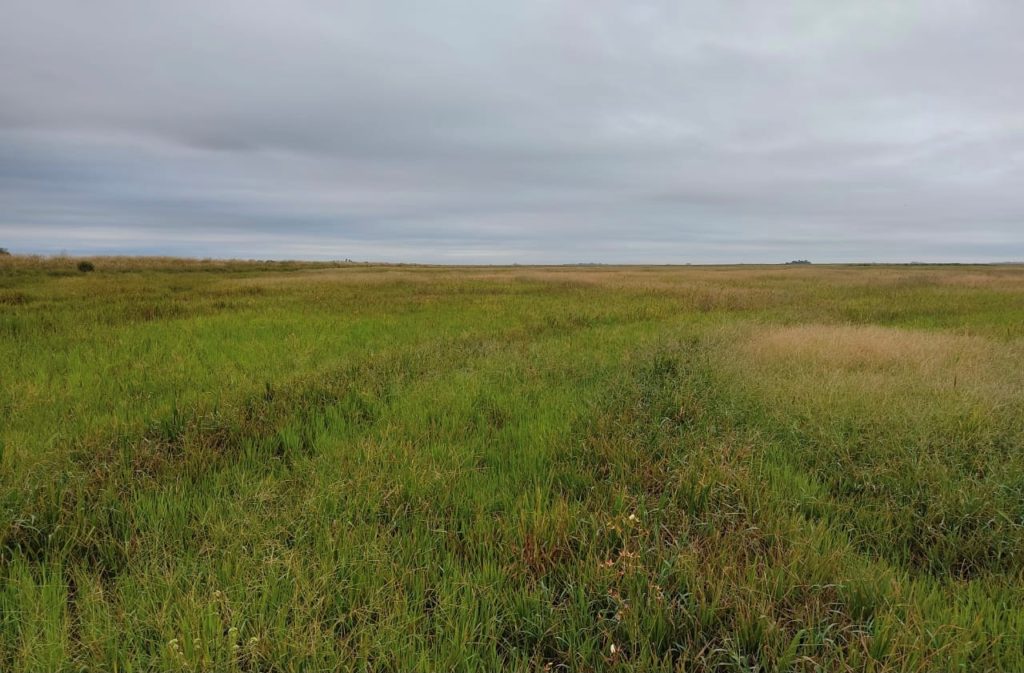
We faced water stress conditions for this block during vegetative, flowering and grain filling stages. Water stress at vegetative stage significantly reduced plant height and total biomass due to decrease of photosynthesis rate and dry matter accumulation. However, water stress at flowering stage had a greater grain yield reduction than water stress at other times.
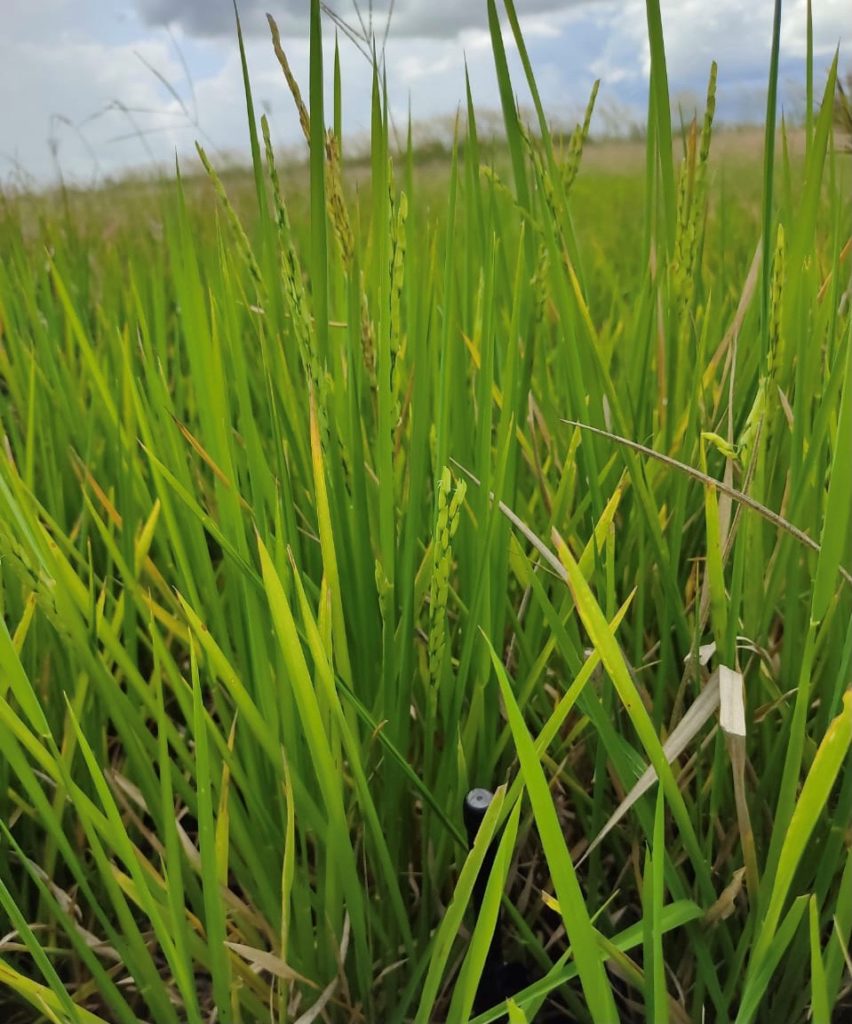
Only weeds have developed well as you can see. The minor small rains we registered during the 2nd semester 2020 only help to boost them. Weeds have competed with rice for water, nutrients, space and light.
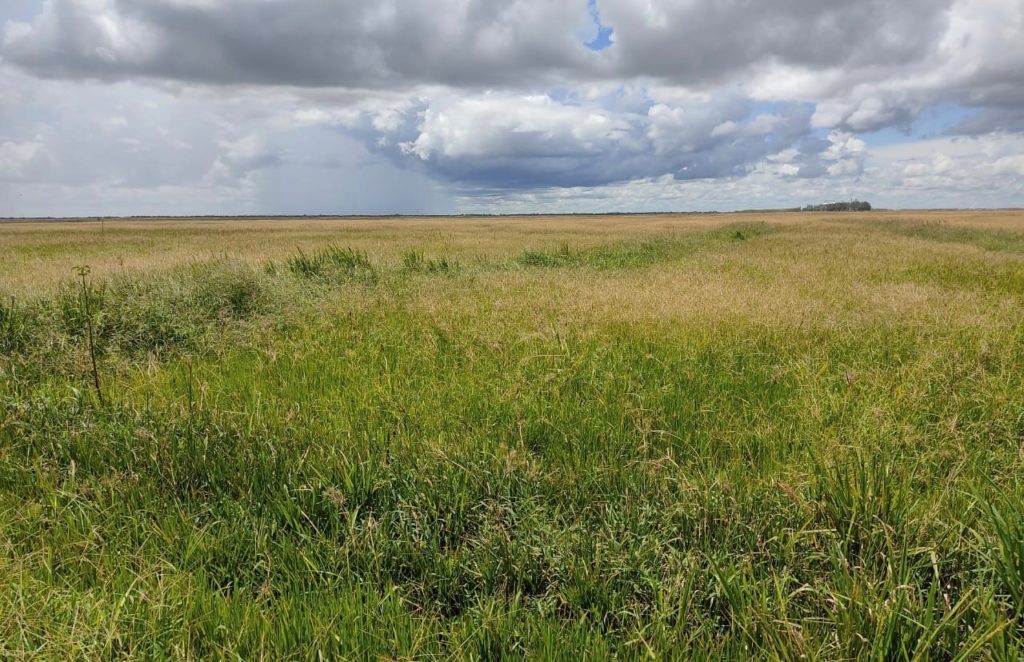
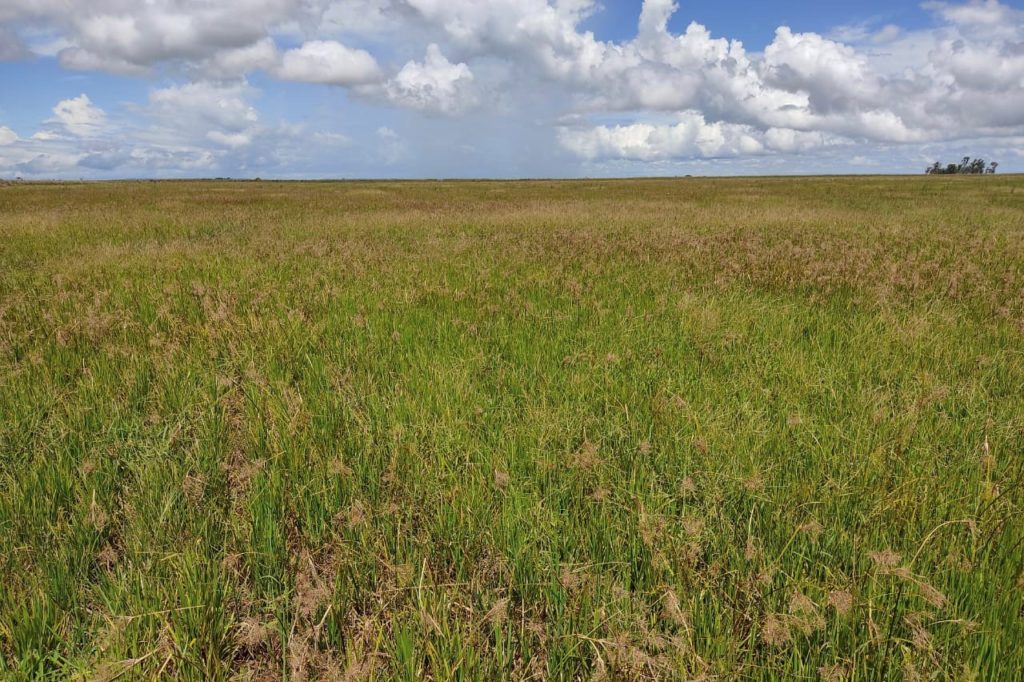
As a result, we have decided not to harvest the entire block and the land will be cleaning for the next cycle.
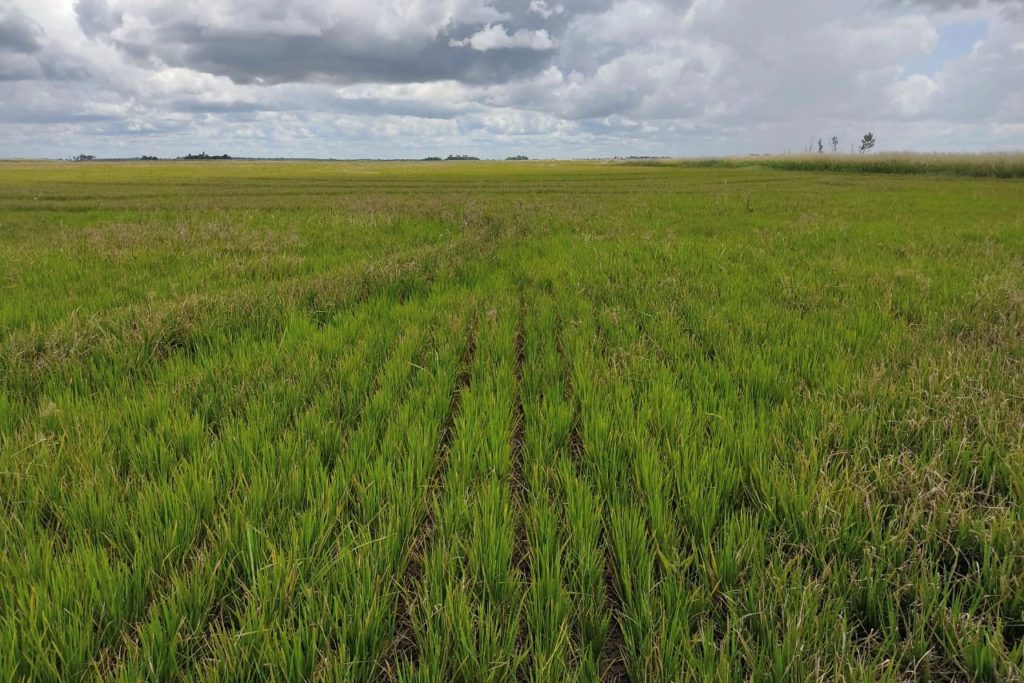
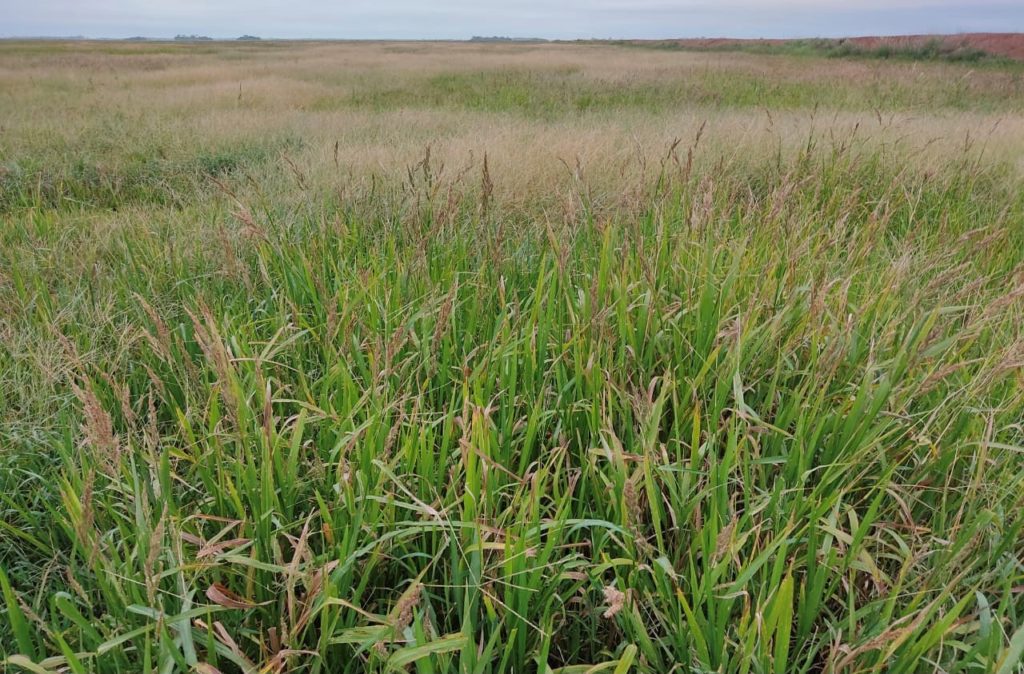
Market: Global rice output is tentatively expected at a new peak on bigger outturns in Asian producers, including India and China. Consumption is also forecast to trend higher on population growth, albeit with uptake in India potentially declining due to the conclusion of COVID-19-related food security schemes. Following a contraction in the prior season, world stocks could edge up.
For now, local prices remain at peak level as most of the farmers have not started yet their harvest. Given the drought faced by all producers, the production will contract but producers are going to be forced to sell what could be saved to cover their costs under conditions set up by mills due to the High level of indebtedness of producers and accumulation of bad cycles.
PARAGUAY – Harvest has begun at Salitre Cue farm (January 2021).
Situation/weather: After having faced a long drought period with strong water shortage, rains are back at the worst possible time as we are starting harvest period. Rainfalls are delaying the harvest process as the soil became muddy and the combine needs to adjust their speed rotation to avoid losses in yield. Meanwhile, humidity of grains is going down quickly and we are currently already in a range of 20 to 23% which is an indication of attaining physiological maturity.

Production: on 11/01/21, we began to harvest our 1st block (Block G – 538 has). So far, we have harvested 50 has and got a preliminary yield of 6.5 t/ha with an index quality between 50 and 54 entire grain. We are expecting lower yields for the remaining surface as the plots suffered more for water shortage.
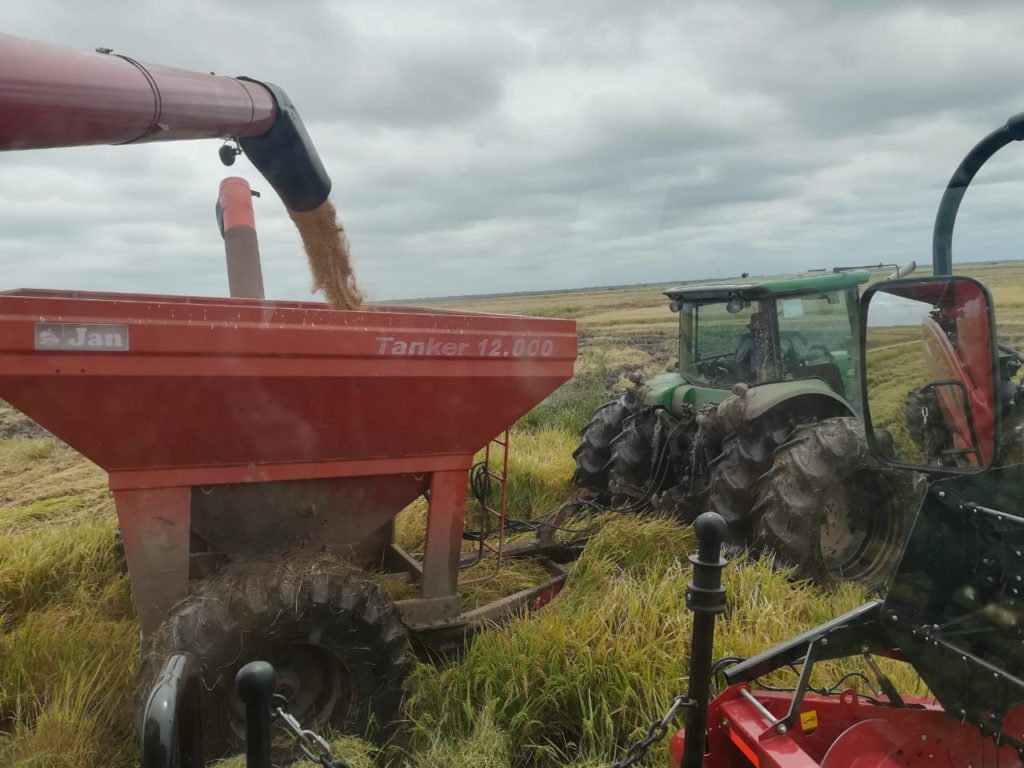
Correct timing at harvest is essential to avoid losses incurred by harvesting too soon or too late. Immature grains harvested too early result in a high percentage of broken and low milling recovery, while if harvesting is delayed; the crop is exposed to insects, rodents and birds, in addition to the risks of lodging and shattering.
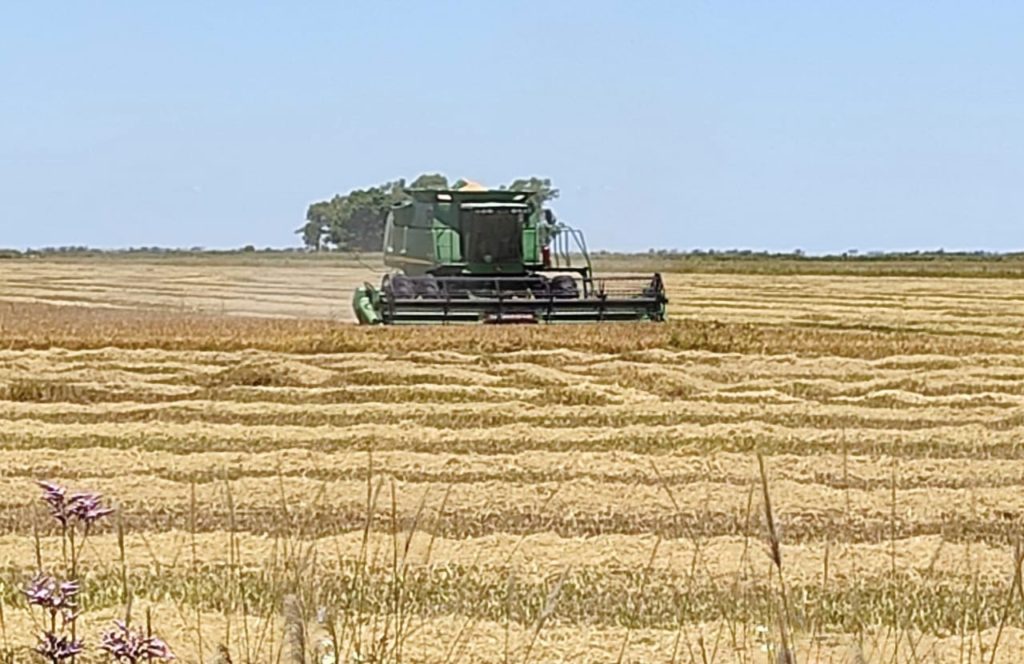
However, water stress recorded over the past months affected the grain development in its germination period and in its blooming stage (unfilled grains). The situation is irreversible.
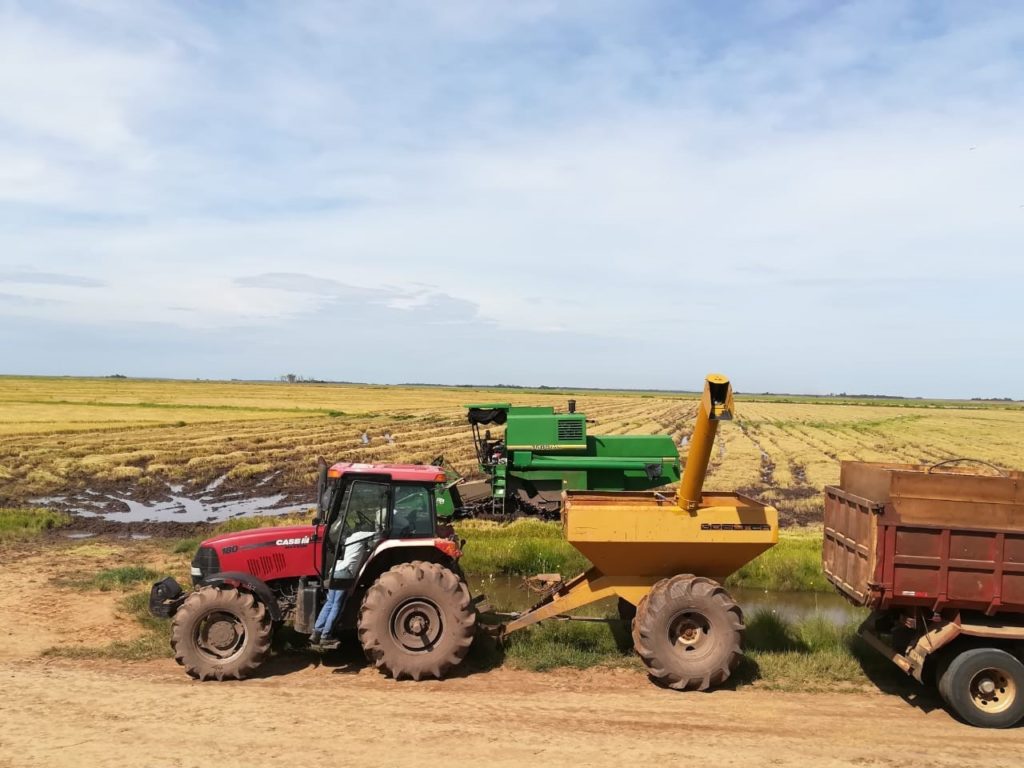
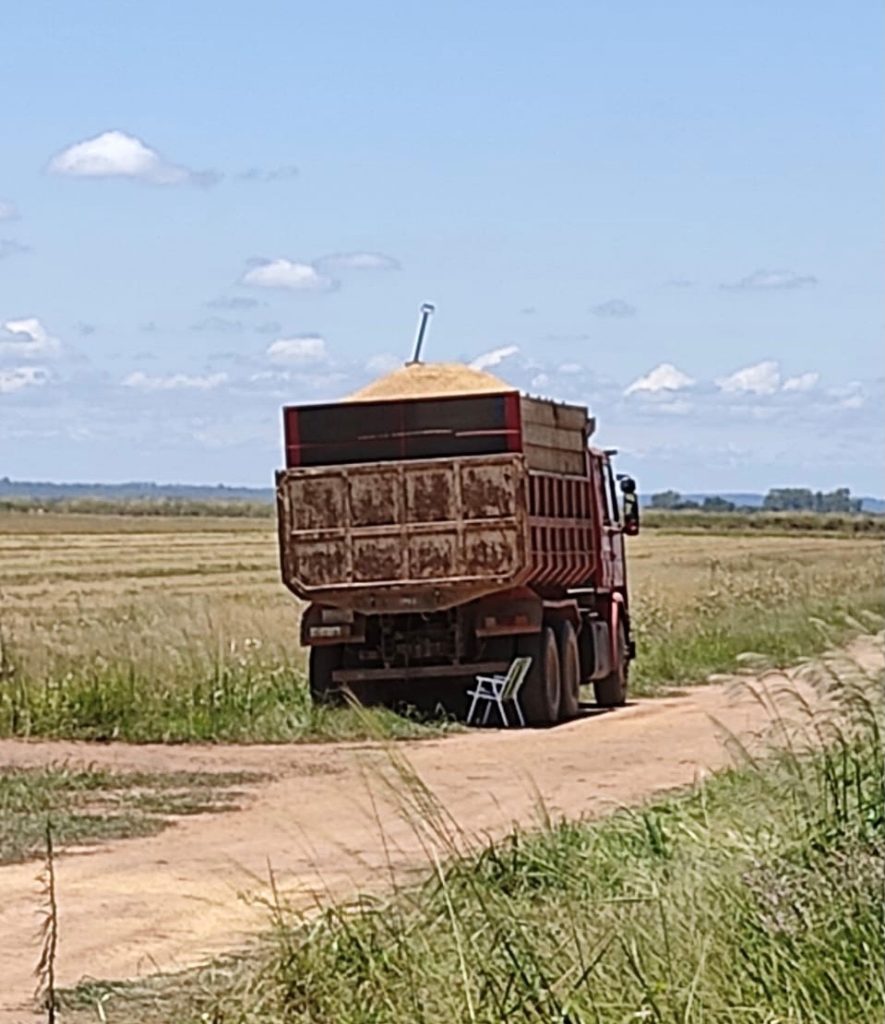
As for our 2nd block of sowing (427 has), the production has suffered the most from the drought and we are going to evaluate the fact if its worth or not to harvest the entire block. The situation is very complex this year and it’s going to be a bad season for all producers.
